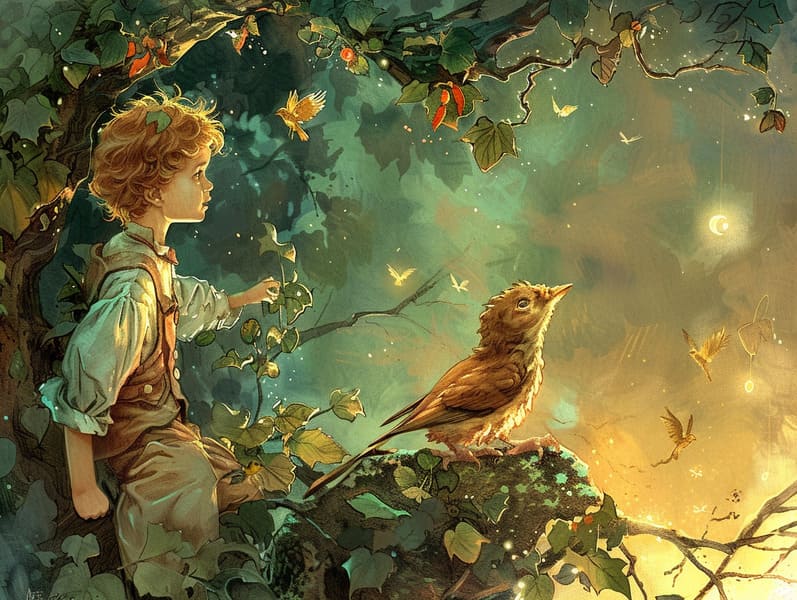Tracing the Heritage of Mythical Fairy Tales with the Unfading Majesty.
Tracing the Heritage of Mythical Fairy Tales with the Unfading Majesty.
Blog Article

Classic fairy tales have historical significance. These tales have been recounted from one generation to the next well before they were ever put on paper. They sprang from a variety of societies, including African traditions. They were initially disseminated among elders, often carrying themes and messages aligned with the societal norms and beliefs of the time.
Jacob and Wilhelm Grimm, the two Grimm brothers, were among the first to compile and release many of these beloved fairy tales. Their collection, "Grimm's Fairy Tales," included classics like "Cinder Maid," "Hansel and Gretel," and "Schneewittchen," which have since become essentials in the world of traditional fairy tales. Similarly, Hans Andersen's charming stories, such as "The Mermaid," and "The Ugly Duckling," have won hearts worldwide, ensuring their place in the pantheon of timeless fairy tales.
Though they are old, these tales remain as relevant as ever, especially as children's bedtime stories. These delightful tales are now available in numerous formats, including artistically illustrated books, charming animations, and online fairy tales.
Their ongoing significance can be ascribed to several fascinating points:
Valuable Lessons: Traditional fairy tales often illustrate important moral lessons. Fairy tales like "The Boy Who Cried Wolf" teach the virtue of truth, while "The Hare and the Tortoise" highlight the qualities of persistence and unpretentiousness. These tales offer young ones clear distinctions between good and bad, shaping their moral compass in a mild yet deep way.
Empathy and Understanding: Traditional fairy tales frequently feature protagonists facing challenges and struggles, motivating kids to understand with their struggles and celebrate their triumphs. For instance, "The Story of Beauty and the Beast" highlights the merit of seeing beyond looks to realize the inner core of a being, encouraging insight and awareness.
Cultural Insights: Many fairy tales are infused with the cultural contexts from which they came. Delving into these narratives can provide captivating looks into different heritages, strengthening a sense of world awareness and respect.
Creativity and Fantasy: The whimsical elements in traditional fairy tales—supernatural elements—spark children’s innovations. These tales bring readers to enchanted realms, activating imaginative thinking and a sense of amazement that lasts a lifetime.
Classic fairy tales are not only delightful but also teaching. They act as spellbinding tools in developing various cognitive and affective skills in young ones. When fairy tales are told out loud, they nurture linguistic abilities by offering new lexicon and elaborate sentence structures. This practice also advances auditory skills and mindfulness, as young ones stay focused, anticipating to see what happens next.
Furthermore, conversing about the themes and characters of classic fairy tales can enhance thinking skills and cognitive skills. Little ones are taught to find patterns, anticipate outcomes, and get cause and effect. These explorations also promote young ones speak out their thoughts and feelings, boosting their emotional intelligence.
In today’s technological era, the existence of free fairy tales online has made these stories more acquirable than ever. Internet resources and software present broad selections of children's fairy tales that can be browsed or played anytime, anywhere. Fairy tales narrated are particularly prevalent, offering an fascinating method for children to immerse in these fantastical tales. Narrated books and read-out-loud stories bring characters and settings to life, often joined by enchanting melodies and harmonies that amplify the tale-telling adventure.
The timeless appeal of classic fairy tales lies in their ability to alter to current times while continuing with their key morals. Contemporary takes of these stories often feature more different protagonists and modern settings, making them understandable to today’s audience. However, the essential messages of boldness, goodness, and even-handedness remain unchanged, continuing to connect with get more info audiences of all ages.
Old fairy tales also offer a sense of serenity and familiarity. They bequeath a well-arranged narrative with a apparent beginning, middle, and end, often finishing with the settlement of conflicts and the triumph of virtue over corruption. This dependability can be calming for children, delivering a sense of sturdiness in an dynamic world.
Ancient fairy tales continue to delight and train new generations, maintaining their appeal and impact in modern society. As children's bedtime stories, they distribute a perfect blend of captivation and insight, encouraging moral values, empathy, and creativity. The accessibility of web-based fairy tales and the likability of fairy tales narrated secure that these timeless fairy tales remain reachable to new generations.
By retaining and sharing these tales, we continue to laud the rich tapestry of narrative artistry and cultural heritage. Whether you are enjoying a vibrantly illustrated book, enjoying a digital library, or listening through an sound book, the beauty of old fairy tales is always within reach. These stories emphasize of the steadfast force of storytelling and its ability to tie us across epochs and places.
Be it you are viewing a colorful picture book, exploring a digital library, or playing an audiobook, the fascination of Grimm's fairy tales is always within reach.
These tales reveal of the unwavering ability of fairy tales and its ability to gather us across generations and cultures, casting a charm that enchants and educates alike.